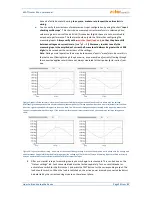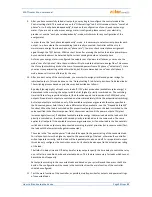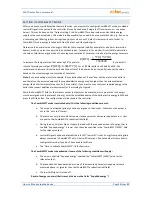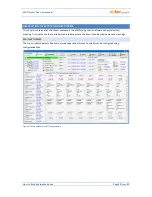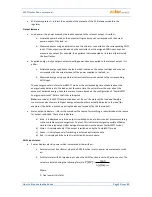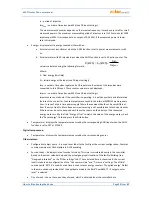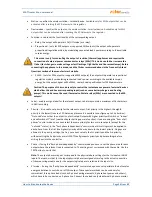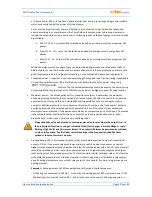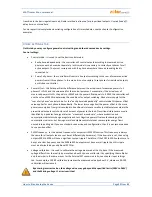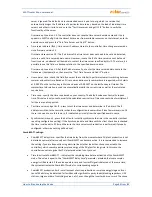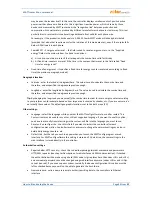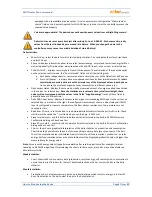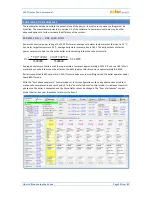
WATTrouter Mx - user manual
How to fit and setup the device
Page 38 from 82
- 3rd heating coil connected to relay No. 2, 3rd priority, connected power 2 kW, prepend value = 1
If the SSR No. 1 is fully switched and consumes 2 kW of surplus energy and the amount of surplus
energy further increases, then the relay No. 1 will switch on and SSR No. 1 will automatically reduce its
power. If the surplus energy increases by additional 2 kW so that the SSR No. 1 is fully switched again,
then the relay No. 2 will be switched and SSR No. 1 will again automatically reduce the power output.
If the power output continues increasing, additional outputs with lower priorities will be connected.
Similarly, outputs will disconnect when the PV-plant power generation will decrease.
Note:
To make sure that the function works correctly, all 3 heating coils must be active (heated) at the
same time or inactive (disconnected by the thermostat). The algorithm will not work correctly if
heating coil No. 1 is disconnected by the thermostat and the other two heating coils will continue
producing heat. In this scenario, the relay will be continuously connected and disconnected because the
controller is trying to keep "virtual zero" or "phase zero", depending on control mode, and is not able to
determine from phase wire measurements that heating coil No. 1 is disconnected. However, if we
arrange that the real output power of the 1st heating coil connected to SSR No. 1 will be measured
with some ANDI input, then the function will work properly even if the heating coils have independent
thermostats.
Note:
In order to ensure correct function of the algorithm it is necessary that the SSR output - to which
the heating coil No. 1 is connected, is assigned with the higher priority than the relay No.1 with the 2nd
heating coil. If the coil No. 1 connected to a SSR output has lower power rating than the other two
remaining heating coils, then the relays will connect only after the overall power (power drawn by the
first coil + surplus energy) exceeds the value of "Connected power" field set for relay No. 1. In this case,
the part of surplus energy will be still delivered to public grid as in the case of the default function of
WATTrouter controller, without prepend mode.
Example 2:
A boiler and 2 other heating elements:
- the boiler connected to SSR No. 1, 1st priority, connected power 2 kW, maximum power 2 kW,
- 1st heating coil connected to SSR No. 2, 2nd priority, connected power 2 kW, maximum power 2 kW,
- 2nd heating coil connected to relay No. 1, 3rd priority, connected power 2 kW,
a)
Prepend value set to
0
: In this case the 2nd coil will never be prepended and after 4kW
surplus is reached and consumed by boiler and 1st coil the controller will wait until the
available surplus is 6kW. Then it connects 2nd coil. In the meantime surplus flows to public
grid.
b)
Prepend value set to
1
: In order to prioritize the 2nd coil, we will take into account only the
load power of the 1st coil, which means that the boiler will always have first priority. So after
PV-surplus reaches 4 kW the 2nd coil will be connected (prepended) before the 1st coil.
c)
Prepend value set to
2 and higher
: In order to prioritize the 2nd coil, we will take into
account the sum of load powers of the boiler and 1st coil. So after surplus reaches 2 kW the
2nd coil will be connected (prepended) before boiler and 1st coil.
Note:
The Prepend function does not affect relay output priorities. For example, if the relay 2 is set to
the nearest lower priority than the relay 1 but has a higher Prepend value than the relay 1, the relay 2
will not be prepended before the relay 1. Therefore, in this case, higher Prepend value for relay 2 than
for relay 1 is not meaningful, so don’t set it.
Minimum power – for proportional outputs when PWM function is used this value gives the minimum
power for the connected load. The output will not be activated unless available surplus energy
exceeds this threshold. Nonzero value can be useful e.g. for proportional control of inverter air
conditioner or heating pump. These devices usually don’t run with less than 1/3 of nominal power. For

